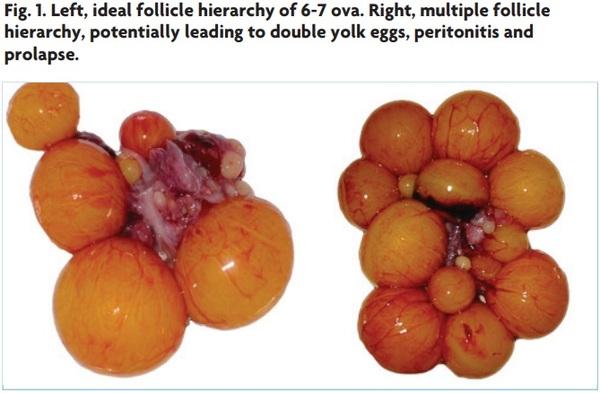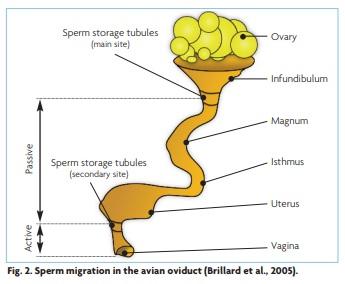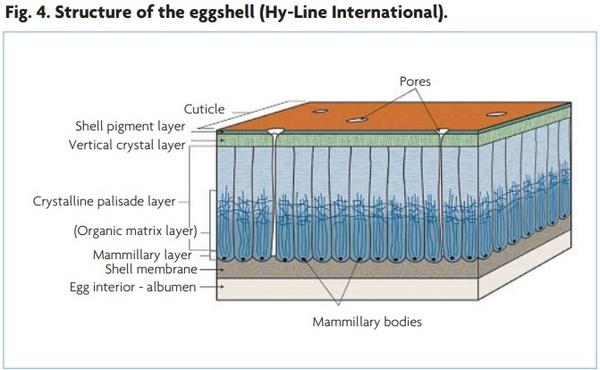Feeding the breeder hen for quality hatching eggs
Published: December 3, 2021
By: Aziz Sacranie / Independent consultant, Global Poultry Services.
The modern broiler chick spends 50% of its life in an embryonic state. It is therefore important to ensure that adequate nutrients are available to the developing embryo, which is completely reliant on the diet fed to the breeder hen. Consequently, the physiological status of the chick at hatching is greatly influenced by the nutrition of the breeder hen.
The nutrient supply to the broiler breeder is a sum of the actual nutrient content of the diet and the quantity or volume of feed supplied to the breeder birds. Both parts need to be balanced to ensure correct daily nutrient supply. This is likely the main difference between producing a broiler hatching egg and a commercial egg.
The cost of feeding the breeder appropriately to ensure good nutritional status of the chick is low when viewed on a per-chick basis and compared with the total feed cost of raising a broiler to slaughter weight
Poultry nutrition advisor Franco Calini calculated that the cost of breeder feed contributing to the production of a chick is equivalent to only 7% of the total feed cost for a broiler grown to 2.5kg. This illustrates the value of ensuring the best possible nutrition of the breeder, even at 2017 feed costs.
The hatching egg
The hatching egg is essentially an embryonic chamber. As such, it provides its contents with physical protection against any external trauma as well as satisfying the nutritional requirements of the growing embryo.
The shell is provided with different markings and colour in order to camouflage it from any potential predators and to help the hen recognise her eggs.
The egg formation is a challenging process, requiring energy and nutrients. If limited or deficient, the hatching egg is not able to fulfil the full potential of its function or its structure.
The yolk
The yolk mass, composed of tightly packed yolk spheres containing lipoprotein, is deposited in a concentric manner 6-11 days before ovulation.
The developing ovum (yolk) grows and matures within follicles on the ovary. The follicle, when mature, ruptures and releases the ova into the oviduct (ovulation).


Ovulation usually occurs immediately after the hen has laid the previous egg; the yolk undergoes no further development after ovulation.
At ovulation, the largest yolk in the follicle hierarchy within the ovary, together with its attached blastodisc, moves into the upper, funnel-shaped portion of the infundibulum, where fertilisation takes place
The follicular hierarchy is important, particularly in broiler breeders. Overweight or overfed hens tend to develop multiple follicular hierarchy, which may result in double yolk eggs, prolapse and peritonitis. Sperm migrates from the vagina to the first sperm storage tubule (SST), located in the uterovaginal junction. After a period of natural selection, the surviving sperm are propelled along the tract to the second SST, located in the infundibulum (Fig. 2).
Thereafter, the sperm is able to penetrate the vitelline membrane, which encapsulates the yolk. Only a fraction of the sperm population survives the journey.
In order to guarantee the fertilisation of a given ova, a minimum of 2,000 sperms are required in the infundibulum. The quality and survivability of the sperm, and its ability to penetrate the vitelline membrane, are enhanced by including quality organic trace minerals in the male and female diets. The yolk is rich in energy, comprised of 21-36% lipid and 16- 22% protein. Immunoglobulins, primarily Immunoglobulin G (IgG), are also transferred as the yolk matures.
The yellow colour of the yolk is due to the presence of carotenoids, which protect the vulnerable embryonic tissues against damage caused by free radicals. This process is also facilitated by the presence of vitamin E, which is enhanced by the presence of organic selenium (Se).
The nutrient composition of the yolk is entirely dependent on the maternal diet and is of vital importance to embryonic well-being. Age, diet and environment each play a role in the quality of the embryonic chamber and its contents.
Formation of the egg
The yolk, once captured by the infundibulum, makes its way along the ovary to the cloaca. The first layer of thick albumen is secreted here, as well as the precursors to the chalazae, which anchor the yolk in the centre of the egg.
The albumen, or egg white, is multi-layered and is largely produced in the longest region of the oviduct, the magnum.

The four layers of albumen, which are visible at oviposition, consist primarily of water (90%) and protein (10%).
A rich source of biologically active material, the albumen is crucial to embryo protection, with its antibacterial proteins serving as a mechanical buffer between the external environment and the developing chick.
Most importantly, the albumen also functions as a support for the deposition of the inner and outer shell membranes.
The albumen’s thickness and turgidity (assured by sulphated mucosubstances) play a crucial role in ensuring shell quality as well as Haugh units, both important in hatching or commercial eggs.
The structure and well-being of the cilia in the magnum assist in maintaining the turgidity and the thickness of the albumen as the yolk progresses along the oviduct.
Respiratory diseases, such as infectious bronchitis, affect the structure and well-being of the cilia in the lower magnum, resulting in watery albumen.
This leads to a lack of support for the deposition of the membranes, which could fold and get distorted, compromising the calcium carbonate deposition and resulting in a wrinkled shell.
Age, stress and oxidation will also impair the magnum’s ability to produce the necessary proteins and damage the cilia, resulting in watery albumen
Fig. 3 illustrates healthy cilia in the magnum and unhealthy cilia, which would result in poor shell construction and quality.
Various researchers have reported that a total replacement of inorganic trace minerals with organic proteinate minerals resulted in healthy cilia in the magnum and the isthmus, improving shell quality.
The eggshell
The egg takes an average of 24 hours to form from ovulation to oviposition. Of this cycle, 20 hours are spent forming the shell membranes and the ‘ true’ shell (the calcified portion of the shell). This multi-layered structure consists of 95% calcium carbonate plus an organic matrix (3.5%), which contains proteins, glycoproteins and proteoglycans.
This matrix influences calcium carbonate deposition during all stages of shell formation, controls crystal growth, shape and the resulting shell.
The structure of the shell can be affected by disease, nutrition and environment. The total thickness of the shell represents the main barrier to bacterial penetration, although each layer has a specific role to play.
The presence of cuticle on the surface of the shell is important; it is the first physical and chemical barrier against bacterial penetration, partially blocking the gas exchange pores.
Beneath the cuticle lies the vertical crystal layer, along with organic matrix proteins. The honeycombed palisade layer, beneath the crystal layer, forms the bulk of the shell.
The matrix proteins throughout the thickness of the shell influence the shell’ s mechanical properties. Shells with a poorly formed organic matrix layer will be more brittle and are prone to breakage.
Each layer of the shell supports a variety of protein types, some classified as ‘egg white proteins’ and others as ‘shell-specific proteins’. Ovocleidin-17 is one such shell-specific protein identified both within the palisade layer and the base, the mammillary nucleate layer.
Mammillary layer
This basal layer is a specific nucleation site on the outer surface of the outer membrane, attracting calcium salts to initiate the formation of the mammillary layer in the tubular shell gland.
Poor mineralisation of mammillary nucleates will lead to poor construction of the subsequent shell layers. The formation of the mammillary nucleates may be influenced by the diet, age and environment.
Pore formation begins at the mammillary layer level.
Palisade layer
The palisade layer is the thickest part of the shell. Each palisade column grows perpendicularly from a mammillary nucleate, fusing as calcification progresses. The palisade layer is covered with a crystal layer, followed by pigment and cuticle.
The hatching eggshell displays, at any one time, a variety of crystal modifications in its mammillary layer
The incidence and nature of the variations from the calcitic growth pattern are made worse by stress, disease, housing and diet, and the impact on the shell as an embryonic chamber or table egg is compromised
Ideally, the following factors are important for hatching eggshell quality:
-Uniform shape and weight
-Effective thickness of the shell (making it resistant to damage).
-Integrity of the shell ultra structure.
Mineral nutrition and egg formation
M. Kidd (2003) reported trace mineral deficiency in adult broiler breeders could cause embryonic defects and mortality, impacting overall hatchability.
Trace minerals in their inorganic form are limited in the ability of the bird to absorb and utilise.
This further diminishes as the bird ages or its health status is compromised. However, the demand for these nutrients increases as the bird gets older.
The role of trace minerals in the process of shell formation, as well as being an integral part of the shell, has been well documented.


Zinc (Zn) and manganese (Mn) are both co-factors in producing enzymes for calcium metabolism. Manganese deficiency reduces shell weight, and shell membranes contain manganese, zinc and selenium.
In 2010, Solomon, Bain and Stevenson conducted an investigation to determine whether the inclusion of Sel-Plex (Alltech) or Bioplex (Alltech) minerals in the layer diet influences the shell formation of commercial eggs.
They used 400 laying birds with four treatment groups (20 cages per treatment, five birds per cage).
The treatments were:
-Treatment A:
Inorganic Se (0.3ppm) and inorganic 55ppm Zn, 15ppm copper (Cu), 70ppm iron (Fe) and 80ppm Mn.
-Treatment B:
No Se supplementation (control).
-Treatment C:
Sel-Plex (0.3ppm Se).
-Treatment D:
Sel-Plex (0.3ppm Se) + Bioplex Zn, Fe, Cu and Mn (20, 5, 5, and 20ppm, respectively).
They examined shell structures at 22, 46, 60 and 72 weeks of age.

The results showed:
At the beginning of lay, structural diversity was most pronounced in the mammillary layer of eggshells from birds fed inorganic Se or the control.
At mid-lay, the mammillary layer of eggshells from birds fed Treatment C or D demonstrated extensive confluence.
Also at mid-lay, physical data showed a trend for improved shell strength in eggs from birds fed Treatment D.
The mammillary layer of eggshells from layers fed Treatment D maintained their fused configuration at the end of lay.
The trend for increased breaking strength values persisted in eggshells from birds fed Treatment D at the end of lay (Fig. 5).
In all cases, inorganic mineral Treatment A showed the worst breaking strength. Even Treatment B with no supplement performed better.
These morphologic variations suggest that albumen quality and its structure are better maintained when fed only organic minerals (Treatment D).
Well-structured, turgid albumen due to healthier cilia in the magnum and isthmus guarantees a suitable base for shell membrane deposition and subsequent shell growth.
The researchers concluded that whilst commercial eggs were used, the results can also be applied to hatching eggs.
The results indicate that supplying trace minerals in an organic proteinate form have a positive influence on shell construction and shell performance.
These results are consistent with the findings of Eden (1999), Ranema (2002) and Rutz (2010). Each of them reported improved performance in broiler breeders when only organic minerals (Bioplex) were supplied in the laying diets.
The improvements they observed were improved hatchability, by as much as 2%, and better albumen quality, shell thickness and weight.
These results – combined with better understanding of the eggshell construction – strongly point in the direction of replacing inorganic trace minerals in breeder diets with organic proteinate trace minerals, such as Bioplex.
This will ensure high-quality hatching eggs that meet the genetic potential requirements of modern broiler breeders.
This article was originally published in International Hatchery Practice • Volume 31 Number 6.
Related topics
Authors:
Join to be able to comment.
Once you join Engormix, you will be able to participate in all content and forums.
* Required information
Would you like to discuss another topic? Create a new post to engage with experts in the community.
Create a post26 de marzo de 2022
An informative article updating the role of microminerals in enhancing the quality of hatching eggs.
Thanks Aziz Sacranie











.jpg&w=3840&q=75)